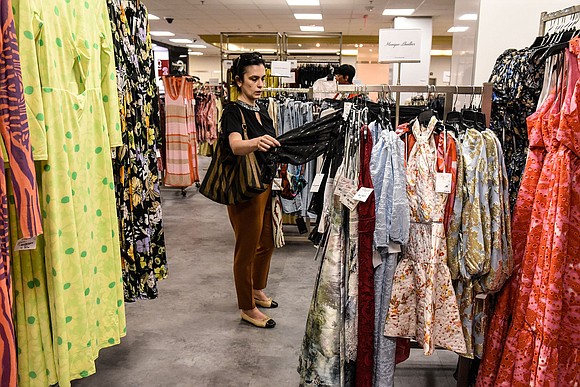The US economy grew stronger than expected in the second quarter, but consumers are pulling back
CNN/Stylemagazine.com Newswire | 7/27/2023, 10:27 a.m.

Originally Published: 27 JUL 23 08:34 ET
Updated: 27 JUL 23 08:58 ET
By Bryan Mena, CNN
Washington (CNN) — The US economy picked up steam in the second quarter despite punishing rate hikes and still-high inflation.
Gross domestic product, the broadest measure of economic output, grew by an annualized, seasonally adjusted 2.4% rate in the April-through-June period, the Commerce Department reported Thursday. That was a faster pace than in the first three months of the year and was also above economists’ expectations for a 1.8% rate, according to Refinitiv. GDP is also adjusted for inflation.
Economic growth in the second quarter was driven by business investment, government purchases, inventory investment, and consumer spending, though at a much weaker pace than in the first quarter. Consumer spending, which accounts for about two-thirds of economic output, grew at just a 1.6% rate in the second quarter, down sharply from a 4.2% rate in the first three months of the year. That was driven by a sharp pullback in spending on durable goods, which are products, such as cars and washing machines, meant to last at least three years.
Nonresidential business investment rose sharply to a 7.7% growth rate in the second quarter, up from a 0.6% rate in the beginning of the year. That uptick was mostly thanks to spending on equipment, which jumped to 10.8% from -8.9%.
The Federal Reserve will look at the GDP report in a positive light after it hiked interest rates by a quarter point this week, lifting rates to their highest level in 22 years. The slowdown in consumer spending reflects cooling demand, which the central bank has been trying to achieve through rate hikes. But the report also underpins resilience in the economy, which could give the Fed enough leeway to do another hike this year.
“The Fed is looking at consumer spending slowing down as a sign that the economy is cooling, so I think they will take some comfort from these from these slower numbers since the Fed wants to push growth below potential,” Lydia Boussour, a senior economist at EY-Parthenon, told CNN.



